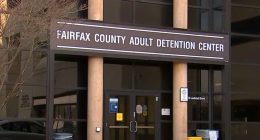
ATLANTA >> When does the COVID-19 pandemic end?
Epidemiologists at the Centers for Disease Control and Prevention may have one answer. Restaurant-goers on Peachtree Street in Atlanta surely have another. And so do people who are at high risk of severe sickness or death as COVID continues to circulate.
“I don’t know when we can say the pandemic is definitively over,” said Jen Kates, vice president of the Kaiser Family Foundation, a health research nonprofit. “There’s a symbolic aspect to it, there’s a political aspect to it, and there’s a practical aspect… I think the reality is, we are at a very different place.”
Many aspects of the special public health measures are ending but that doesn’t mean COVID is over.
Close to 1.13 million people in the U.S. have died from COVID-19 over the last three years, according to the CDC, including 1,773 people in the week ending April 5. (In Hawaii, the state Deparmtne of Health’s official COVID-related death toll is 1,868 as of Wednesday.)
President Joe Biden signed legislation Monday to end on May 11 the U.S. public health emergency for COVID, which had been declared by President Trump in March 2020 to free up federal funds and resources to combat the pandemic. The federal health emergency was initiated in January 2020 by the Secretary of Health and Human Services and renewed every 90 days.
The emergency declaration gave sweeping powers to the government to free up funding, waive laws and lift regulations on medicine, housing, production, insurance and other facets of business and daily life in order to get through the pandemic.
Some of those emergency measures are now being unwound while others have already been phased out. Among the changes: The Department of Housing and Urban Development’s COVID mortgage forbearance program is set to end at the end of May. A Trump-era policy giving border agents the power to turn away migrants without legal process is also set to end next month.
Here’s more on the historic emergency declarations and what they mean. Experts also weigh in on the state of the pandemic as it crosses the three-year mark.
Paying more for COVID services
Under the pandemic emergencies, the federal government bought millions of COVID tests, doses of vaccines and antiviral treatments, and distributed them to doctors and medical facilities so patients could get them for free. Now the stockpile is running out, and Congress has stopped funding it.
Whenever it runs dry, the government is going to let insurance and the health market take over. People without insurance will have to pay for these tests, vaccines and antiviral medications. Private insurance, including Medicare Advantage plans, will have to make most things free or accessible.
Under the emergency provisions, if a Medicare patient was diagnosed with COVID-19 and needed hospitalization, the Medicare payment to the hospital was increased by 20% to reflect the additional costs of treating a patient with COVID-19. That 20% increase ends when the public health emergency ends.
At-home COVID tests
Many people will have to pay full price for over-the-counter test kits.
After May 11, people with traditional Medicare will no longer receive free, at-home tests.
>> Those with private insurance, including Medicare Advantage, no longer will be guaranteed free at-home tests, but some insurers may continue to voluntarily cover them.
>> For those on Medicaid, at-home tests will be covered at no cost through September 2024. After that date, state Medicaid programs will decide whether to continue coverage.
Treatments:
>> After the federal stockpile runs out, many private insurers will continue to cover the antiviral COVID treatment Paxlovid, although patients may be asked for a copayment.
>> Medicare beneficiaries will face cost-sharing for most COVID treatments.
>> Medicaid and CHIP programs will continue to cover all pharmaceutical treatments at no cost through September 2024. After that date, these treatments will continue to be covered; however, states including Georgia may impose utilization limits and nominal cost-sharing.
Vaccines:
>> Under the Affordable Care Act and other recent legislation, even after the federal supply of vaccines is gone, vaccines will continue to be free of charge to the vast majority of people with private and public insurance.
>> People who don’t have insurance will need to either pay the full cost out-of-pocket or seek charity, such as pharmaceutical companies that might decide to provide the drugs at a reduced cost to safety-net clinics. The pharma companies are expected to set vaccine prices at $100 or more, and public health experts are concerned that this population will not afford to get vaccinated, both endangering them and undermining general COVID control.
Telehealth
Telehealth usage exploded during the pandemic. The health tech industry was just emerging with useful internet tools; at the same time, the government loosened restrictions on which services can use it and whether insurance can pay for it, such as allowing physical therapists to treat patients by telehealth and be reimbursed by Medicare.
>> During the pandemic, doctors have been allowed to remotely prescribe controlled substances like pain medication. But on May 11, some patients will once again be required to visit their doctor in person to get that prescription.
>> With other medical services — such as physical therapy and even emergency room visits — government and health officials are re-assessing whether to revert to stricter regulations like before or make the flexibility permanent. For the moment, some medical services can still be provided remotely. For those covered by Medicare, these services are allowed through the end of 2023.
COVID-19 Data
Data collection is different now. It’s harder to know how many people are infected because of the widespread transition to at-home tests, which aren’t publicly recorded. But new tools are emerging in fits and starts, such as wastewater surveillance.
>> Several organizations that also fought the pandemic with up-to-date science and data on the spread and impacts of the coronavirus are pulling back on daily updates or winding down. The White House COVID task force is set to disband. This is the body that watched the science, guided the response and held briefings for reporters across the nation.
>> After more than two years of publishing daily data on COVID cases, hospitalizations and deaths, the agency announced last October it was shifting to weekly updates to tracking the virus. An interactive county map continues to show local levels of COVID, combining case and hospitalization data to determine the current impact of the virus on communities.
Re-applying for government assistance
>> Government assistance programs like food stamps, known as SNAP; Medicaid, and others have not been re-verifying people’s eligibility upon enrollment. But now they’re starting to verify eligibility again.
The new abnormal
Some pandemics don’t really end, they shift. In technical terms, the disease becomes “endemic” — more stable or manageable while persisting in a population or region.
But while COVID is no longer causing severe disruption to the point of closing schools or businesses, the virus is still killing hundreds of people every day — and requiring hospitalizations — with the oldest and more medically fragile patients most at risk.
Overall, the numbers of COVID cases are down sharply. The deaths reported in Georgia continue to sink to all-time lows. Georgia reported 1,670 laboratory-confirmed COVID cases, and 46 COVID-related deaths in the week ending April 5, the most recent data available.
“I would describe the current state as low-level, manageable endemicity. And I think that was, either overtly for some, or covertly for others, the real goal,” said Dr. Richard Rothenberg, Regents’ Professor Emeritus in the School of Public Health at Georgia State University, also an associate editor at the journal Global Epidemiology.
How should people respond to the latest COVID numbers?
“Whatever we say, most people assume it’s gone and act accordingly,” said Rothenberg.
Small increases, which would likely be clustered, would probably not change things much, he said, but a new, substantially different variant could create “major problems.”
Rothenberg, who is 81, only wears a mask at medical facilities now, as required. He’s had the primary vaccine series and two boosters. He had COVID in August, a mild case but, he added, “not a disease you want to have.” Were there to be a resurgence, he said, the main thing he would do is go back to mask-wearing and hope for an effective new booster.
————
AJC Data specialist Stephanie Lamm and reporter Donovan Thomas contributed to this article.
This article originally appeared in the Atlanta Journal-Constitution., and was distributed by Tribune Content Agency LLC.
Read More: World News | Entertainment News | Celeb News
Star






